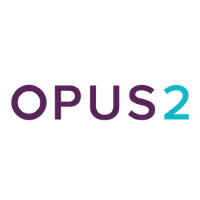
Enterprise Content Integration & Migration Products | Anaqua (formerly SeeUnity)
By SeeUnity’s CTO, Dan Hunsinger –
Curb Content Management Complexity with an Anything Works with Anything Connector Approach
I’ve written before about our product development approach to integrating all the things we do with the ultimate goal of making our customers’ lives less complicated. We develop connectors for a wide variety of systems in a way that a single API can be used by multiple solutions and applications, allowing them to be repository agnostic. We then create our own solutions for synchronization, search, migration, and so on, on top of the connector architecture. The advantages to our development team and the SeeUnity business are fairly clear – we maximize the value of our development efforts to produce a large number of solution or connector combinations that are most useful to our customers. In this article, I thought it would be interesting to discuss some benefits to our customers we’ve been seeing because we take this fundamental approach.
Migrate Content from Many Sources
Velocity Content Migration (Velocity) is our solution that consists of crawlers, transforms, and writers where any crawler can be used with any writer. The crawler reads an “item” from a connector into a normalized format, and the writer takes the item and calls a specific connector to migrate it. Most migration projects start off as something to something (e.g., iManage to iManage Cloud), but quite a few of them grow to include other sources when people realize the same software can easily be used to consolidate all content. We always seem a little surprised to find how many organizations are still dealing with massive file shares, for example.
Maximize Your Connector Investment – Integrate Multiple Systems
Most of our customers are initially looking for a specific point solution, for example synchronizing content between NetDocuments and HighQ. Once you have that particular scenario deployed and connected to the repositories, it becomes clear that there’s a lot of other things you can do with the same connectors. For example, a new solution can be added to index the content in SharePoint, or that same content can be bubbled up as UI components into other systems like SharePoint (web parts) or Salesforce. For us, these are easy add-ons to an existing deployment, usually a single MSI (an installer package file) and a little lightweight configuration.
Built on a .NET framework, the foundation that provides the native ECM connectors for all of our software modules and solutions is called Core Integration Services (CIS). One installation gives you access to multiple repositories and software products.
Choose Versatility to Support Future Growth
We’ve certainly seen a lot of shifting among the major document management vendors over the last few years. As a result, it seems like a lot of customers are rethinking their whole data management (DM) strategy. The problem a lot of customers face then is how to handle all their current integrations. Our strategy from the beginning was to provide an off-the-shelf version of those integrations, and then provide a path to their next DM platform.
Recently, one of our long-time customers decided one system was no longer meeting their requirements, and they were going to move to another. We can not only use Velocity to migrate their content, but the integrated solutions they’ve come to rely on will simply work with their new DM system because of our anything works with anything connector approach.
Relative to these multi-solution scenarios, I get asked a lot just how much can one CIS deployment do. Can one instance handle all these different applications? In almost all cases, the answer is yes. CIS actually has very low resource requirements. There are a few functions that require some serious CPU or memory requirements, like when we’re publishing and converting documents in real time to PDF for example, but it’s not common. Most of the time, CIS acts as a broker between other systems’ API calls. We call an API on a thread, wait on the result while calling another API on another thread, wait on the result, and so on. It doesn’t seem like it at first, but acting as that integration broker is actually very lightweight and can therefore support many different solutions at once.
In a Nut Shell
We talk to companies in nearly every industry that use numerous best-in-class business systems to support their users’ productivity, but many are struggling with such complex application landscapes when it comes to content management. A technology stack consisting of many disconnected systems can result in inefficient processes and productivity challenges. Securely integrating business applications transforms workflow, improving process efficiency across the organization. We strive to not only make it easier to create those connections but also to offer the versatility needed to connect to new systems as organizations grow and evolve.
Related Posts


Product Updates & Roadmap 2023-24 (North America Session)

An IP Management Platform Journey: Collaboration and Strategic Vision

Opus 2 and SeeUnity partnership offers DMS integrations to enhance security and collaboration for lawyers

How Better Connecting Your Data and Systems Creates Efficiency

Automated Content Sync for AQX® and Your DMS
Footer

An IP Management Platform Journey: Collaboration and Strategic Vision
- +1 970-776-8300
- Info@SeeUnity.com
-
5255 Ronald Reagan Blvd.,
Johnstown, CO, 80534 USA - Visit Anaqua's Site
- Visit WiseTime's Site
